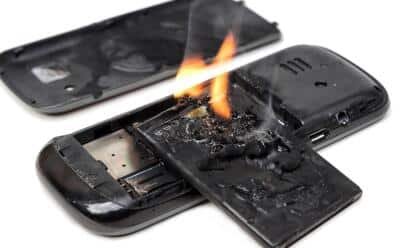Overview Of Lithium Salts in Li Ion Battery Electrolyte
As an important part of lithium-ion batteries, the electrolyte lithium salt can not only provide free shuttle ions for lithium-ion batteries and assume the role of transmitting ions inside the battery. At the same time, the electrolyte can also form a protective layer on the surface of the electrode material, which to a large extent determines the capacity, operating temperature, cycle performance, power density, energy density and safety of lithium-ion batteries.
Content
What is Battery Electrolyte?
A battery has three major components – the cathode, the anode, and an electrolyte that separates these two terminals. The lithium battery electrolyte is a chemical that allows an electrical charge to pass between the two terminals. The electrolyte puts the chemicals required for the reaction in contact with the anode and cathode, therefore converting stored energy into usable electrical energy.
Function of battery electrolyte
1.the electrolyte provides part of the active lithium ions, which are used as conductive ions in the charging and discharging process.
2 the electrolyte provides an ion channel, or carrier, in which lithium ions can move freely.
This reaction provides power to the connected device, whether it’s a light, a vacuum, or an electric vehicle.

Lithium Battery Design Design Ebook Download(2M, 20 pages, PDF)
Components of Lithium Battery Electrolyte
The electrolyte is mainly composed of three parts, mainly solvents, lithium salts, and additives. Among these components, although the amount of additives added is still small compared with other components, there are the largest types of additives that can be added to a serving of electrolyte.
Lithium salt
High-quality lithium salts have a greater impact on the energy density, power density, wide electrochemical window, cycle life, and safety performance of lithium batteries. The elements commonly contained in lithium salts are LiPF6, LiClO4, LiBF4, LiAsF6, etc.
solvent
The role of the solvent in the electrolyte is mainly used to dissolve the lithium salt. The solvents in the electrolyte are mainly cyclic carbonates (PC, EC); chain carbonates (DEC, DMC, EMC); and carboxylates (MF, MA, EA, MA, MP, etc.).
Additive
There are many types of additives, and different additives have different effects. Although the added components are small, they have different effects on the performance of lithium battery packs. The main types of additives are film additives, conductive additives, flame retardant additives, overcharge protection additives, additives that control the content of H2O and HF in the electrolyte, additives that improve low temperature performance, and multifunctional additives.
The electrolyte has a significant impact on the overall performance of lithium batteries. As the blood of lithium-ion batteries, the electrolyte bears the heavy responsibility of transporting lithium-ion batteries. Its quality will directly affect the performance of lithium-ion batteries.
11.png)
What is Lithium Salt?
Electrolyte lithium salt is an important part of the electrolyte of lithium-ion batteries. At present, lithiumLiPF6-carbonate electrolyte is widely used in the market. LiPF6 has the advantages of good solubility, high ion conductivity, and high ion dissociation, but it has poor thermal stability and is easy to hydrolyze to produce HF, which is an important cause of battery performance attenuation. Therefore, in recent years, people have been working hard to find a new type of lithium salt with better performance to replace the traditional lithium salt LiPF6.
What is the Function of Lithium Salts?
1.Improve the conductivity of the electrolyte and the number of lithium ion migrations
2.Enhance the ion conductivity of the electrolyte
3. Reduce the impedance of the electrode surface film to form a stable film with good ion conductivity
How Many Kinds of Lithium Salts?
Here are mainly eight kinds of lithium salts used in lithium ion battery electrolyte: LiPF6 liBF4 LiClO4 LiBOB LiDFP Liodfb liFSl LiTFSl

Lithium Battery Design Design Ebook Download(2M, 20 pages, PDF)
Detailed Introduction on Lithium Salts
LiPF6
Characteristics:
-
1.Lithium LiPF6 decomposes in the air, releasing PF5 and producing white smoke
2.Decomposition temperature in organic solvent 80℃

LiPF6
Dosage
- Generally around 1.2M, the electrolyte has the highest electronic conductivity
- More than 1M is conducive to long life cycle
- The battery capacity below 0.8M is obviously low
- Usage: 1.0M-1.4M
LiBOB

LiBOB
Characteristics:
- Coordination chelates form a stable large wu conjugated system with large anions, easy to dissolve, and strong electrical conductivity.
- The decomposition temperature is 302℃, and the stability is excellent
- It is easy to decompose in LiPF6 electrolyte of GBL and PC solvents
Dosage:
- When added to the electrolyte, the acidity will rise
- Enhance the circulation of lithium manganese acid and inhibit expansion
- The negative electrode is stable in film formation and can be used in PC solvents to broaden the battery temperature range.
- It is conducive to circulation in lithium iron batteries
- Within 1% of usage
LiBF4
Characteristics
1.Good thermal stability, melts and decomposes at 390℃, and is not sensitive to environmental moisture
2.The decomposition temperature in the solvent is greater than 100℃

BF4-
Dosage
1.The high temperature performance is better than that of BOB, and the low temperature performance is better
2.Within 0.5% of usage
LiODFB

LiODFB
Characteristics
1.The decomposition temperature is 240℃, and it will not react with the solvent under high temperature conditions.
2.The conductivity is between LiBF4 and BOB
3.The negative electrode film formation is stable and the impedance is small. The main reason is that the F atom on the ODFB optimizes the structure of the SEI and shortens the length of the polymer chain formed, forming a SEI that is conducive to lithium ion de-embedding.
Dosage
1.The high-pressure system is used more, and the combination with other additives has a better effect.
2.Affect the acidity test of the electrolyte
3.Within 1% of usage
LiTFSl
Characteristics
- Generally used at about 40ppm
- Has high electrochemical stability and electrical conductivity
- The decomposition temperature is 370℃. Will not produce H+ in case of water
- Adapt to the ultra-thin and diversified development of batteries

LiTFSl
Dosage
- Lithium iron phosphate and ternary system, play a role
- In the primary high-end battery, the high and low temperature performance, safety performance and capacity are greatly superior to the traditional LICLO II battery.
- Control usage within 1.5%
LiFSI

LiFSI
Characteristics
- Excellent conductivity. Due to the low binding energy between lithium ion and FSI-, it is conducive to the dissociation of Li+
- The thermal stability is higher than LiPF6, and the thermal decomposition temperature of LiFSI is 308℃
- Strong low temperature performance, LiFSI is significantly better than LiPF6 in an environment below -20℃
Dosage
- Increase the magnification, and the magnification will not decrease under high temperature storage
- Improve low temperature performance
- Within 1.5% of usage
LiDFP
Characteristics:
1. The formation of a film at the electrode interface improves the high and low temperature cycle performance, reduces battery self-discharge, and can effectively reduce the use of lithium LiPF6.

LiDFP
Dosage
- Increase the ternary high temperature cycle, within 1% of the usage
- It is better to form a film with DTD, VC, FEC, etc.
- Improve circulation in high-nickel and silicon-carbon electrolytes
LiClO4

LiClO4
Characteristics:
- A SEI film with low internal resistance and good lithium-ion permeability has been formed, and its magnification performance has been improved.
- At high temperatures, it exhibits better cycle performance than at room temperature, and it can also exhibit better Coulomb efficiency.
Dosage:
- Low temperature performance is better than LiPO2F2
- The general usage is within 1.0%, and it has a similar effect to lithium LiPO2F2.
Lithium Battery Design Design Ebook Download(2M, 20 pages, PDF)
Is Lithium Salts safe?
No, it isn’t. It is the most dangerous substance in lithium battery electrolyte, especially LiPF6. If your lithium ions battery leak, please stop using it and let professional people handle it as soon as possible. Try to avoid lithium battery leakage, you’d better choose branded batteries.
Harm of Lithium Battery Electrolyte to Human Body
Lithium electrolyte can be absorbed by mouth, nose and skin.
Once electrolyte is been absorbed, people will get headache, dizziness, nausea and difficulty breathing. Liquids or high-concentration vapors are irritating. Oral stimulation of the gastrointestinal tract. Long-term repeated contact with the skin is irritating.
Harm of Lithium Battery Electrolyte to Environment
In case of open flame and high heat, there is a risk of combustion because it is flammable.
Its vapor is heavier than air. It can spread to a considerable distance at a lower level, which will cause back-burning in case of an open flame.
Emergency treatment of leakage
- Quickly evacuate personnel from the leaking contaminated area to the safe area, isolate them, and strictly restrict access.
- Cut off the source of the fire.
- It is recommended that emergency peoplewear self-contained positive pressure respirators and wear fire-fighting protective clothing.
- Cut off the source of leakage as much as possible. Prevent access to restricted spaces such as sewers and drainage ditches.
Small amount of leakage: absorbed by water or other inert materials. It can also be scrubbed with an emulsion made of a non-flammable dispersant, and the lotion is diluted and placed in the wastewater system.Large-scale leakage: build an embankment or dig a pit to contain it. Cover with foam to reduce the risk of vapor. Transfer to a tank truck or special collector with an explosion-proof pump, recycle or transport to a waste treatment site for disposal.
First aid measures
Skin contact:Immediately remove contaminated clothing and rinse with plenty of flowing water for at least 15 minutes. Seek medical attention.
Eye contact: Lift the eyelids and rinse with flowing water or saline. Seek medical attention.
Inhalation: Quickly leave the scene to a place with fresh air. Keep the respiratory tract unobstructed. If you have difficulty breathing, give oxygen. If breathing stops, perform artificial respiration immediately. Seek medical attention.
Ingestion:Those who take it by mistake gargle with water and drink milk or egg white. Seek medical attention.
As an important part of lithium batteries, the electrolyte lithium salt not only plays a role in providing and transmitting lithium ions, but also determines the overall performance of this lithium battery to a certain extent. A detailed understanding of the advantages and disadvantages of existing lithium electrolyte salts has a good reference and promotion effect for the development of new lithium electrolyte salts.
Lithium Battery Design Design Ebook Download(2M, 20 pages, PDF)
Prev Article: Common Causes of Lithium Battery Explosion and Avoidance measures
Next Article: Soft Pack Lithium Battery Package Technology



Leave A Comment